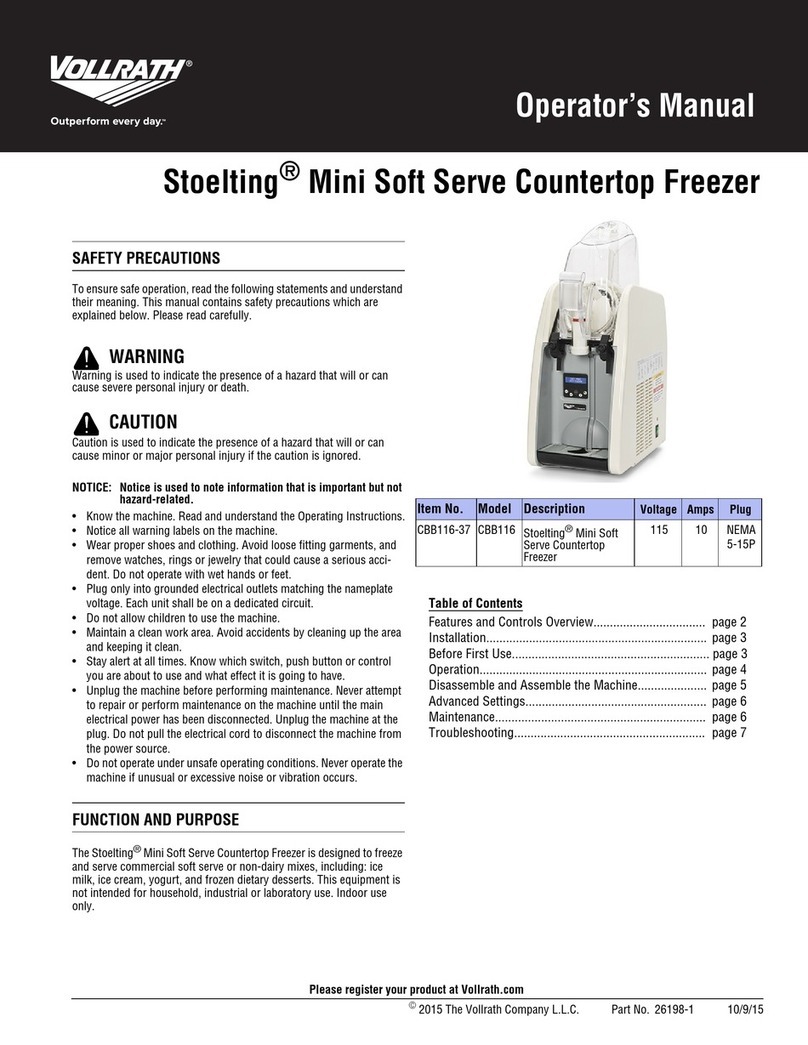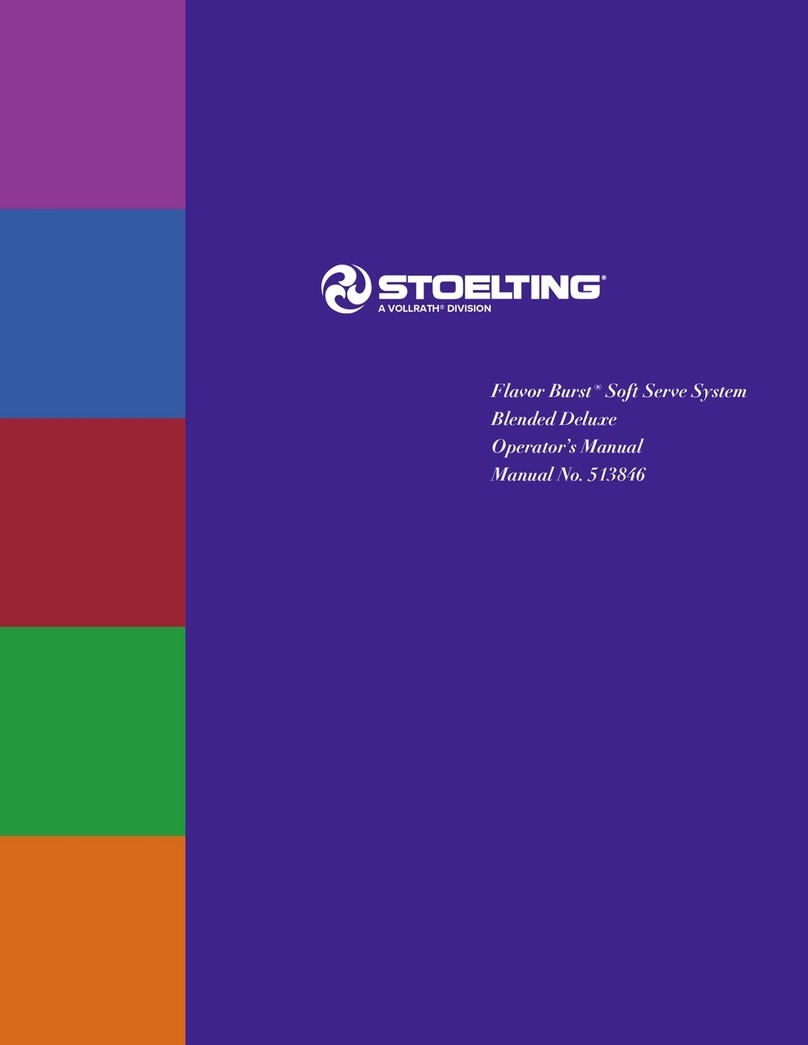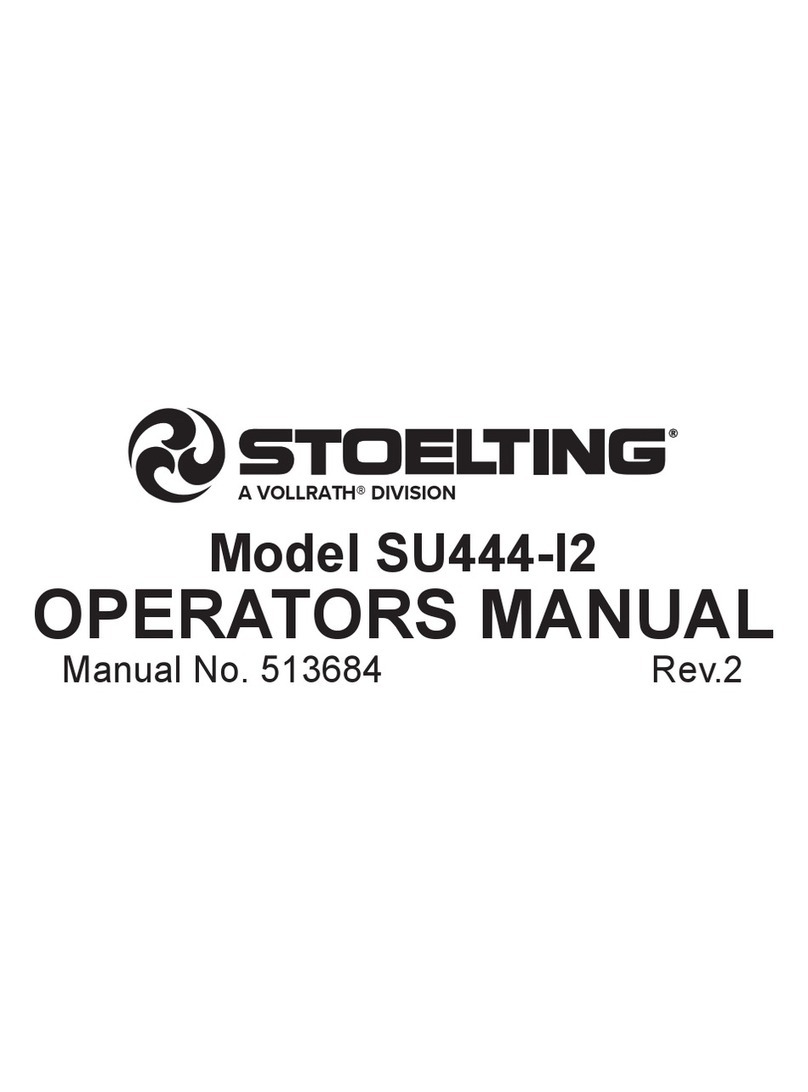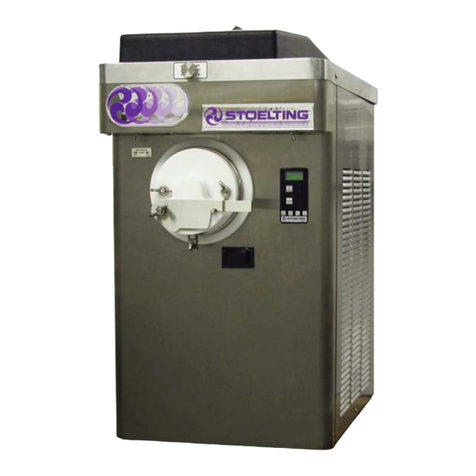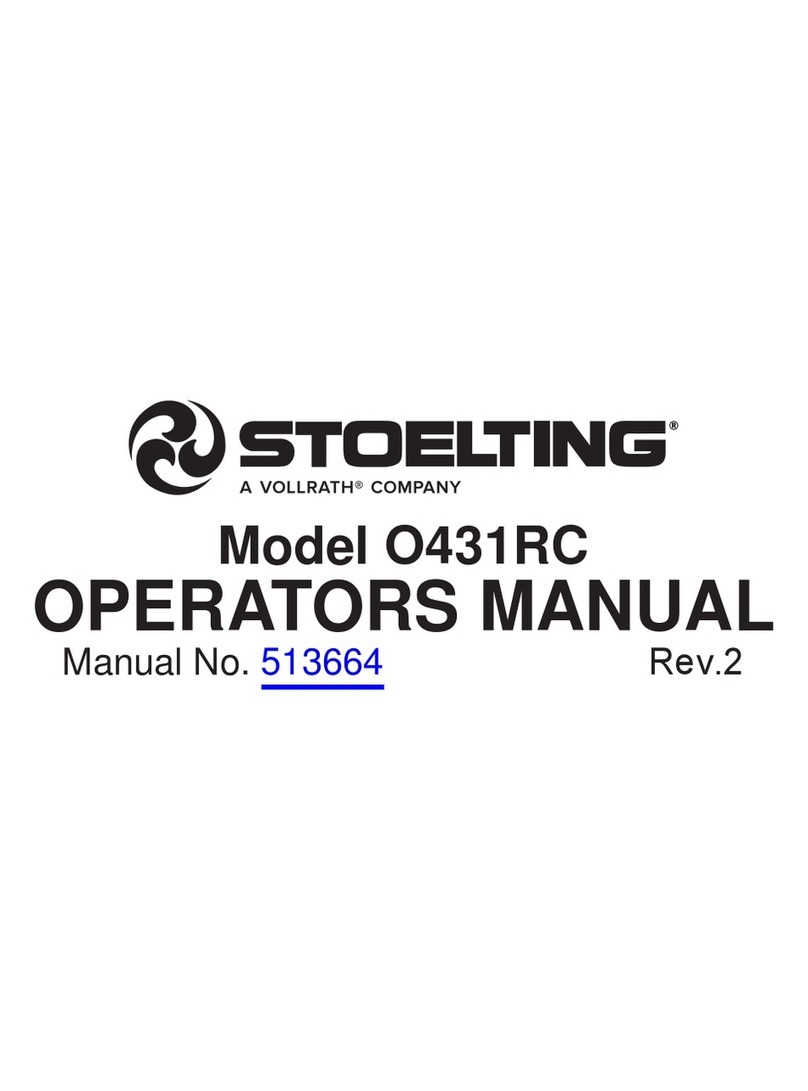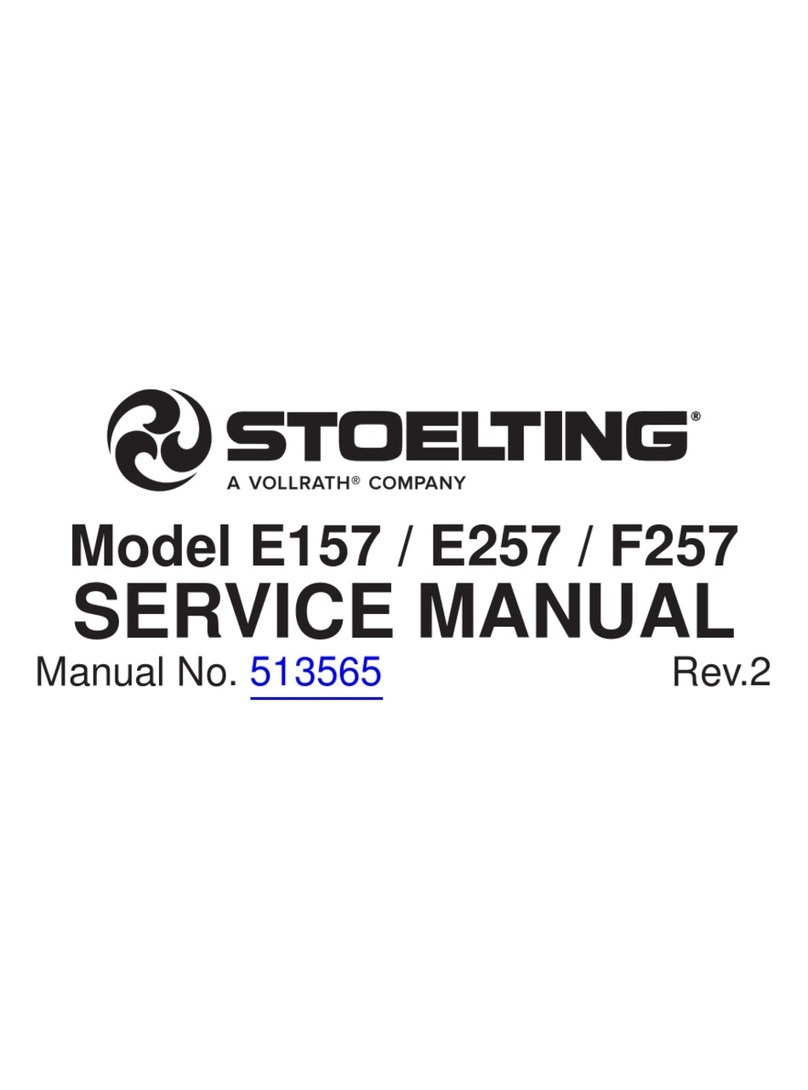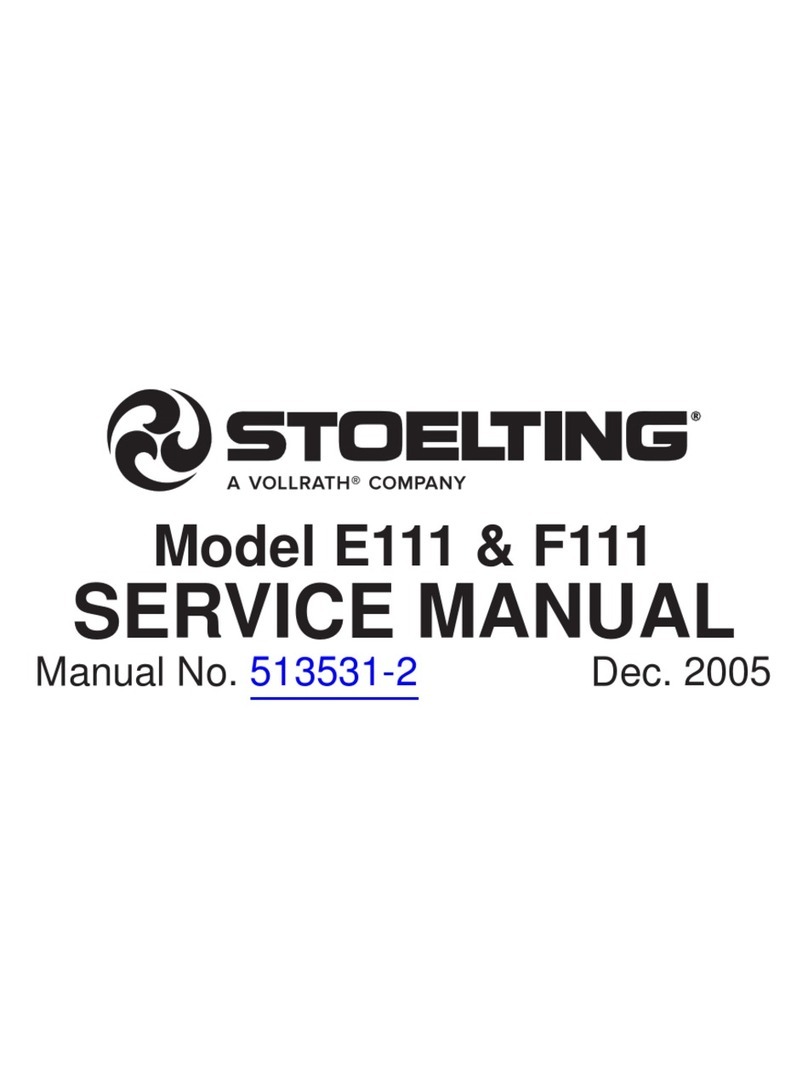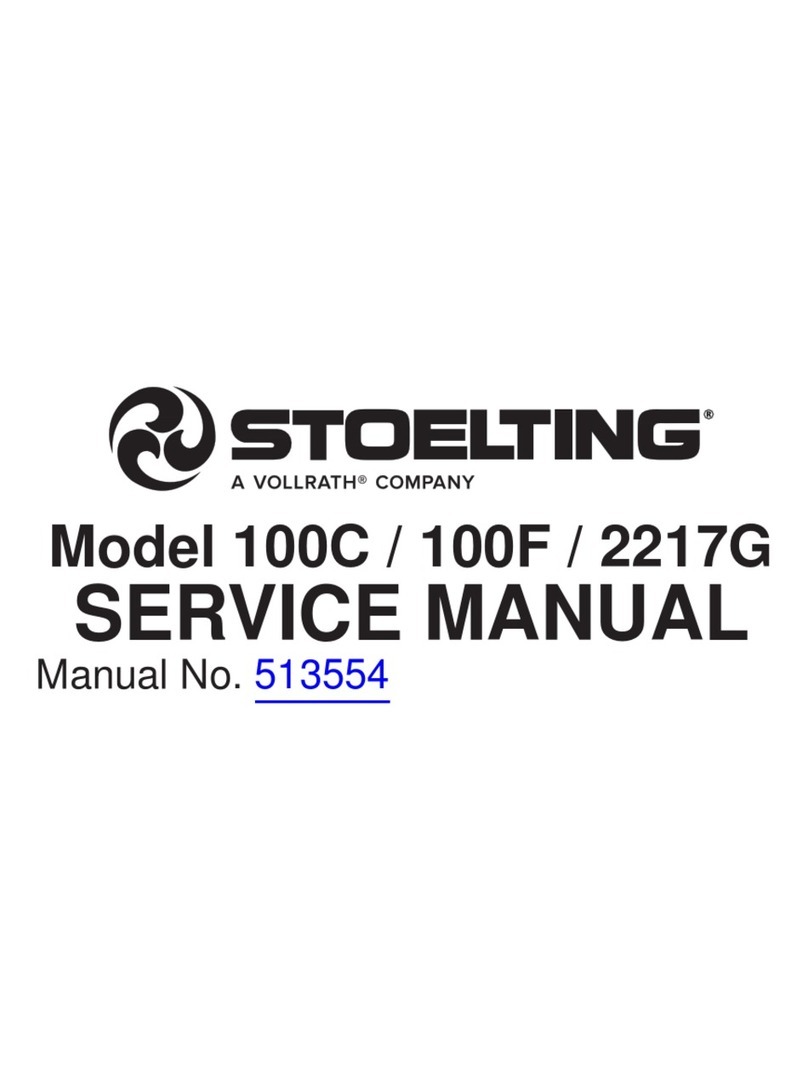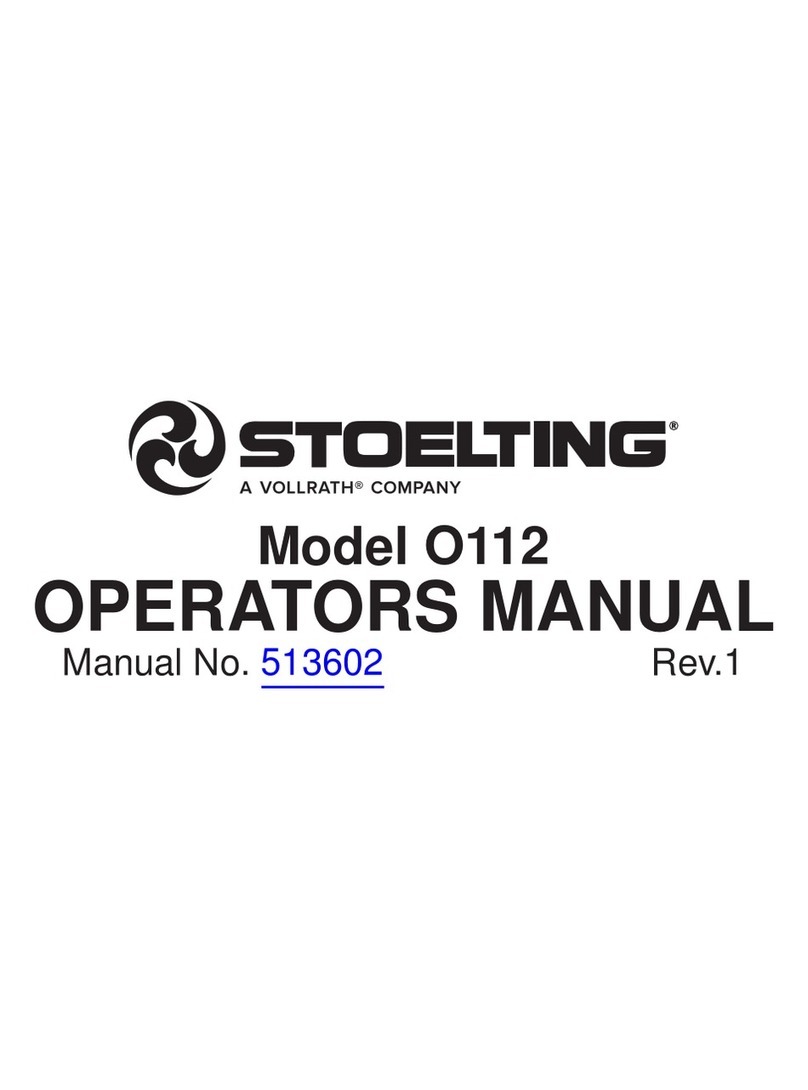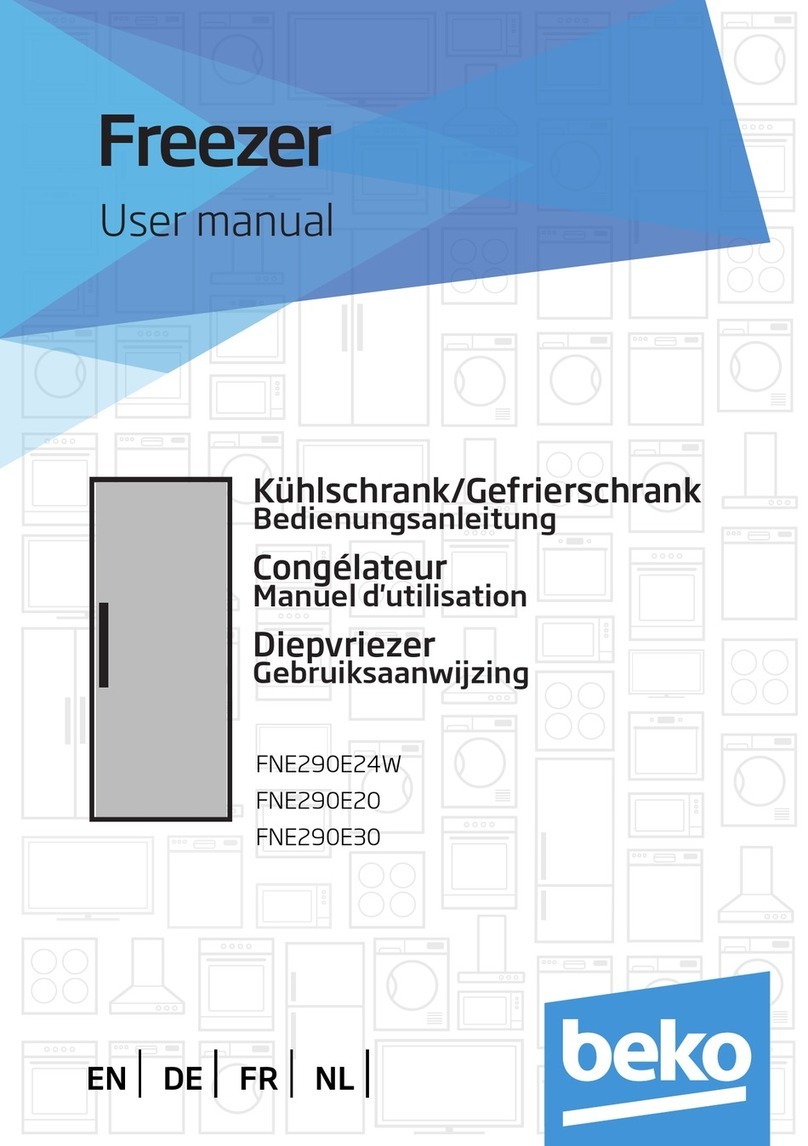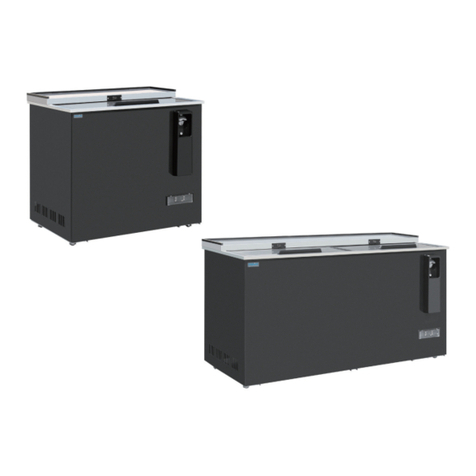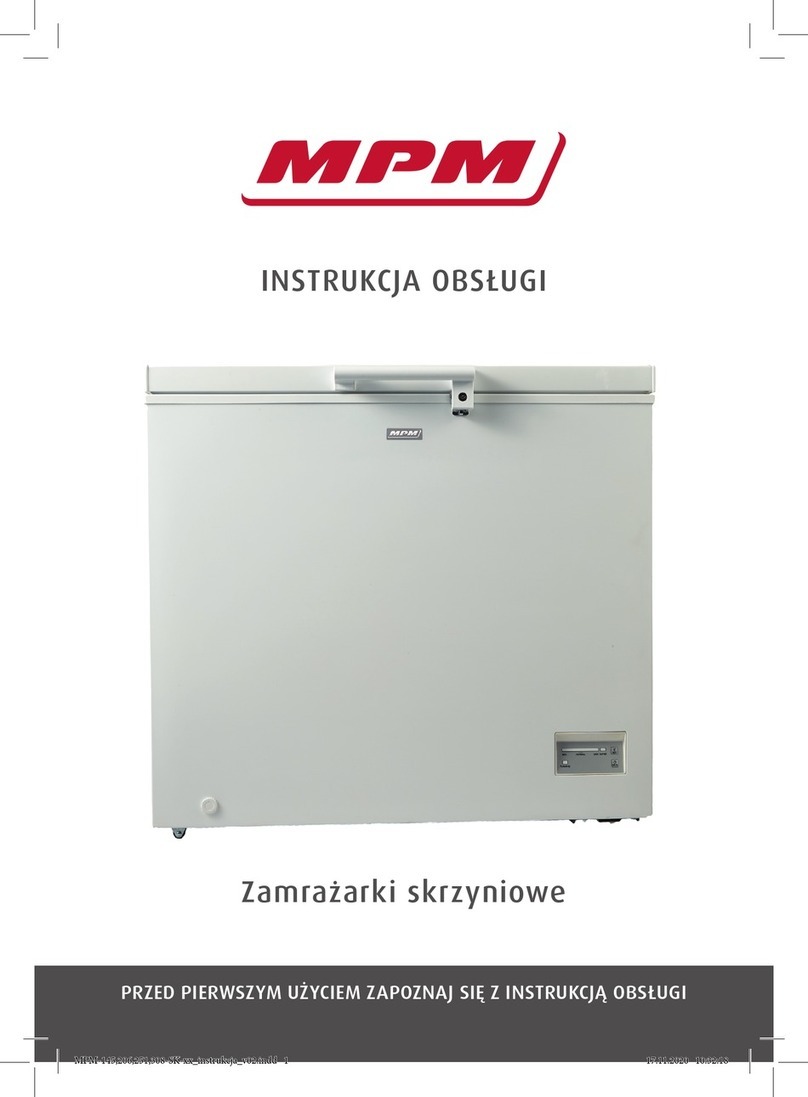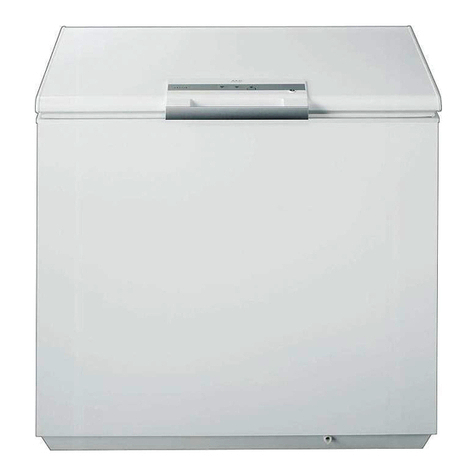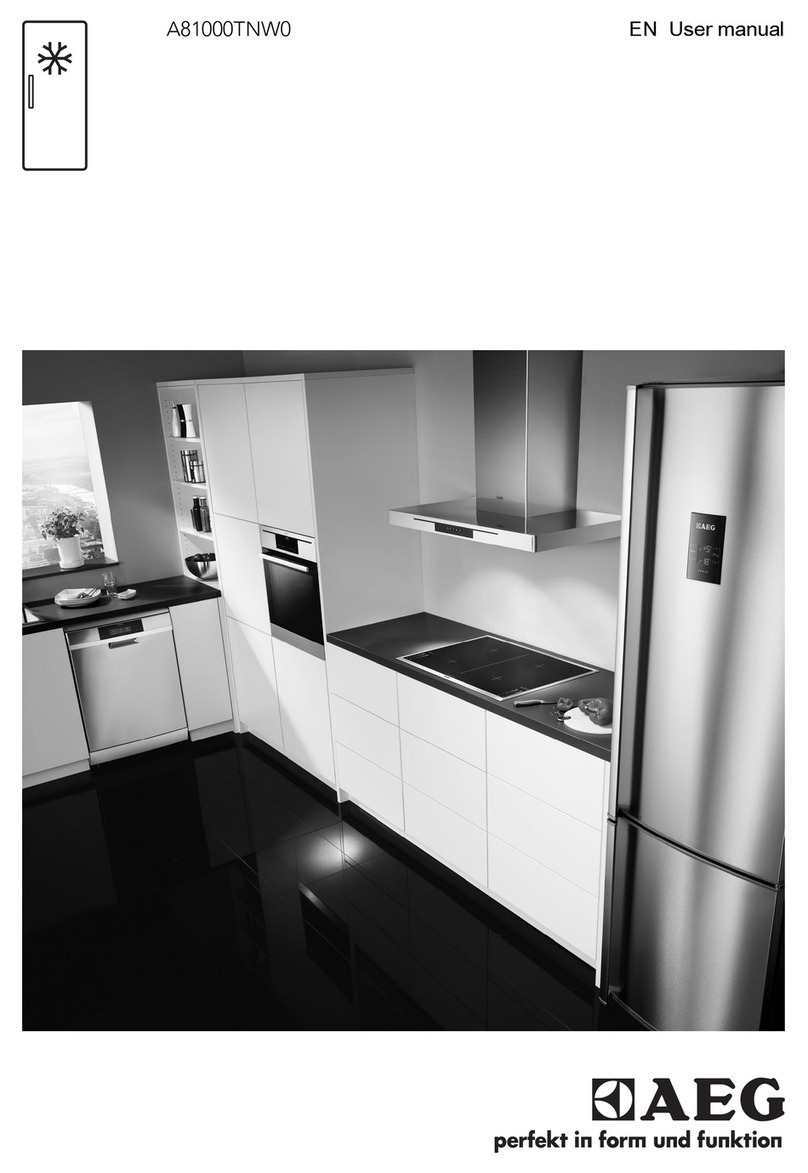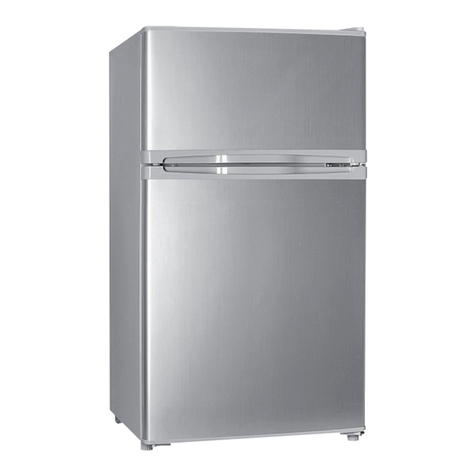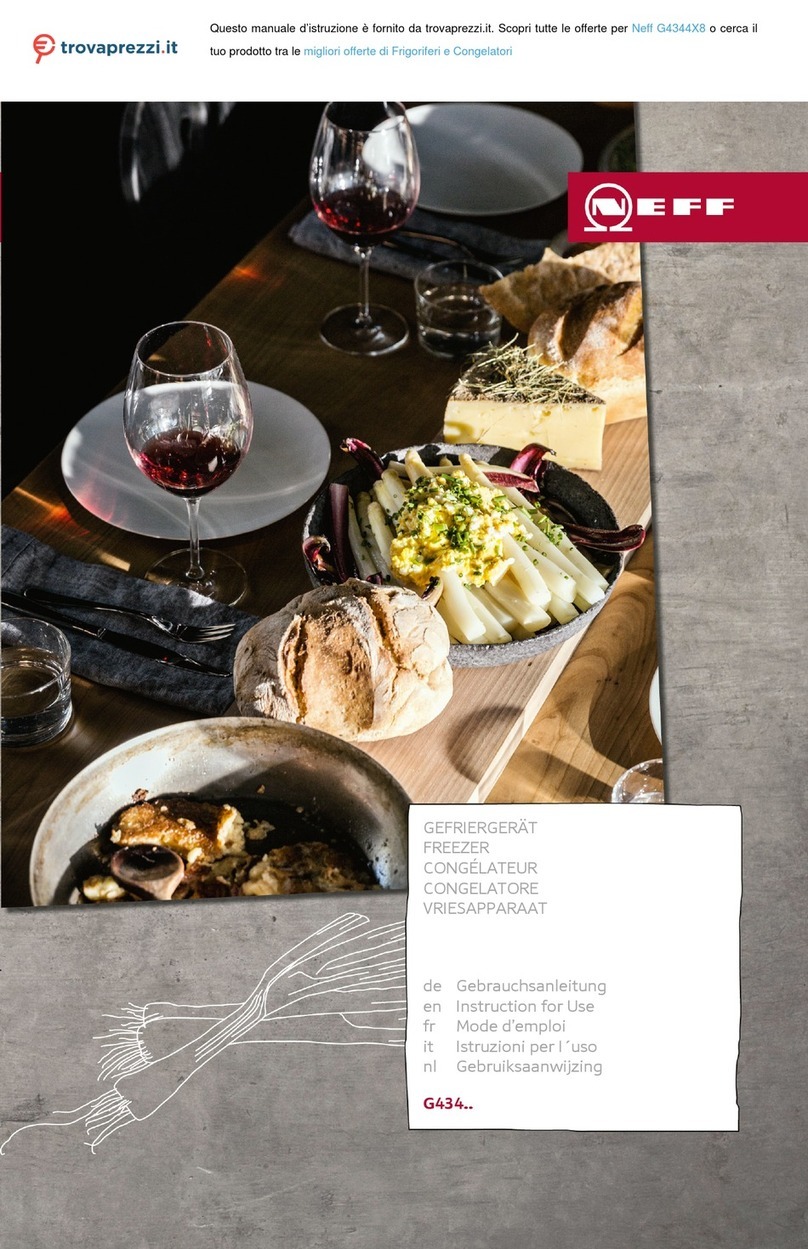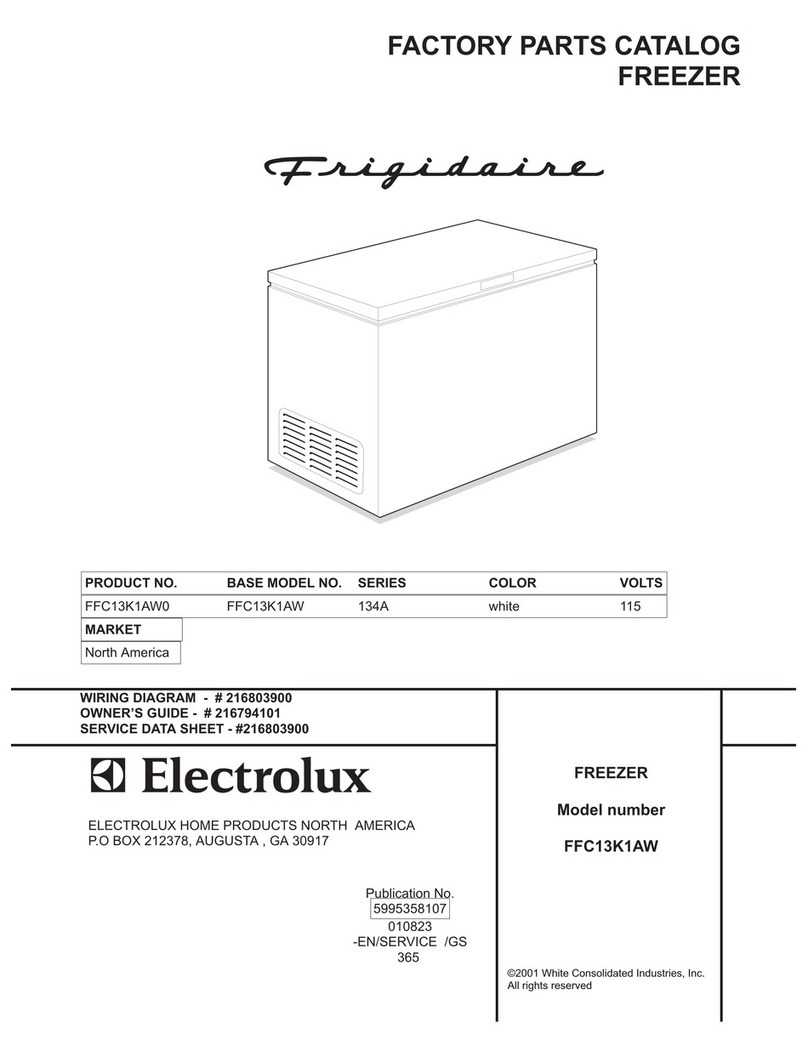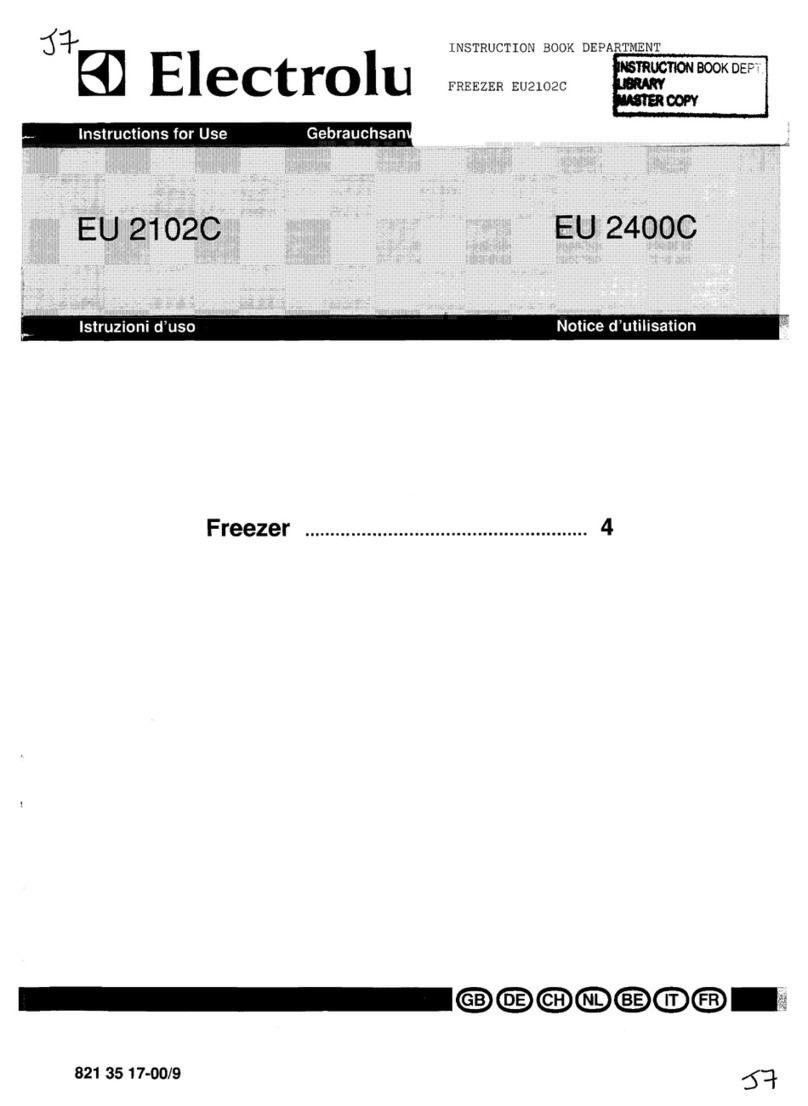
4
2.2SHIPMENTANDTRANSIT
Thefreezerhasbeenassembled,operatedandinspected
at the factory. Upon arrival at the final destination, the
completefreezermustbecheckedforanydamagewhich
mayhaveoccurredduringtransit.
With the method of packaging used, the freezer should
arriveinexcellentcondition.THECARRIERISRESPON-
SIBLEFORALLDAMAGEINTRANSIT,WHETHERVIS-
IBLEORCONCEALED.Donotpaythefreightbilluntilthe
freezerhasbeencheckedfordamage.Havethecarriernote
anyvisibledamageonthefreightbill.Ifconcealeddamage
and/orshortageisfoundlater,advisethecarrierwithin10
days and request inspection. The customer must place
claim for damages and/or shortages in shipment with the
carrier.Stoelting,Inc.cannotmakeanyclaimsagainstthe
carrier.
2.3FREEZERINSTALLATION
Installationofthefreezerinvolvesmovingthefreezerclose
to its permanent location, removing all crating, setting in
place,assembling parts, and cleaning.
A. Uncratethefreezer.
B. Accuratelevelingisnecessaryforcorrectdrainage
of freezer barrel and to insure correct overrun.
Placea bubble levelon topof the freezerat each
cornertocheckforlevelcondition.Ifadjustmentis
necessary,levelthefreezerbyturningthebottom
part of each leg in or out. Then separate freezer
basegasketandinstallwithseamtothebackand
angle to the top.
C. If the freezer is equipped with an air cooled
condenser,correctventilationisrequired.Theright
side of the freezer is the air intake and left side
discharge.Bothsidesmusthave3"clearancethe
toprequires 10"ofclearance.
CAUTION
Failuretoprovideadequate ventilation willvoidwar-
ranty.
D. Place the OFF-ON switch in the OFF position.
E. Connect the power cord to the proper power
supply.Theplugisdesignedfor208or230volt/20
ampduty.Checkthenameplateonyourfreezerfor
proper supply. The unit must be connected to a
properlygroundedreceptacle.Theelectricalcord
furnishedaspartofthefreezerhasathreeprong
grounding type plug (Fig. 2-3). The use of an
extensioncordisnotrecommended,ifnecessary
useonewithasize12gaugeorheavierwithground
wire.Donotuseanadaptertogetaroundgrounding
requirement.
WARNING
Do not alter or deform electrical plug in any way.
Altering the plug to fit into an outlet of different con-
figuration may cause fire, risk of electrical shock,
productdamageand will voidwarranty.
F. Install the drip tray, drain tray, hopper cover and
othermiscellaneouspartsonthefreezer.
Figure 2-2 Space and Ventilation Requirements
115V
20Amp
Figure 2-3 Electrical Plug
208/230V
20Amp
